Supertest: Soviet Tier X Cruiser Petropavlovsk
5 min readThe Petropavlovsk shares similar origins with the Riga. Just like the tier IX cruiser was representing Project 82 back in 1943, the tier X represents it as it was in 1949.
Funnily enough, while Petropavlovsk is what will later become Stalingrad, the ship is WAY smaller and is, in fact, similar to Henri IV in terms of size.
Another thing to note about the Petropavlovsk is that due to her turrets being far from the small superstructure, they can actually rotate at 360°.
Features of the Soviet heavy cruisers:
Effective armor-piercing shells: They have high armor penetration for cruisers, good ballistics, and a short fuse arming time (0.022 seconds), which lowers the number of overpenetrations. These shells also have improved ricochet angles: it is possible starting from 55 degrees and guaranteed from 65 degrees;
These strengths are offset with an average reload time and special accuracy settings: at long ranges, the dispersion ellipse of the new sub-branch ships is bigger than that of other cruisers;
A combination of their accuracy settings and a Surveillance Radar consumable with a 12 km range makes the new cruisers most effective at medium ranges.
Hull | Engine | Gun Fire Control System | Main battery |
Petropavlovsk |
Propulsion: 140 000 hp |
GFCS X mod. 1 |
220 mm/65 SM-6 |
| Tier | X |
| Health | 55 800 HP |
| Displacement | 24 750 tons |
| Main Armament | |
| Maximum Firing Range | 18.450 km |
| 220 mm/65 SM-6 | 3 x 3 220 mm |
| Secondary Armament | |
| Maximum Firing Range | 5.000 km |
| 130 mm/60 BL-109A | 6 x 2 130 mm |
| Maximum speed | 32.5 kts |
| Turning Circle Radius | 990 m |
| Rudder Shift Time | 12.2 s |
| Surface Detectability | 14.40 km |
| Air Detectability | 8.3 km |
| Detectability After Firing Main Guns in Smoke | 9.02 km |
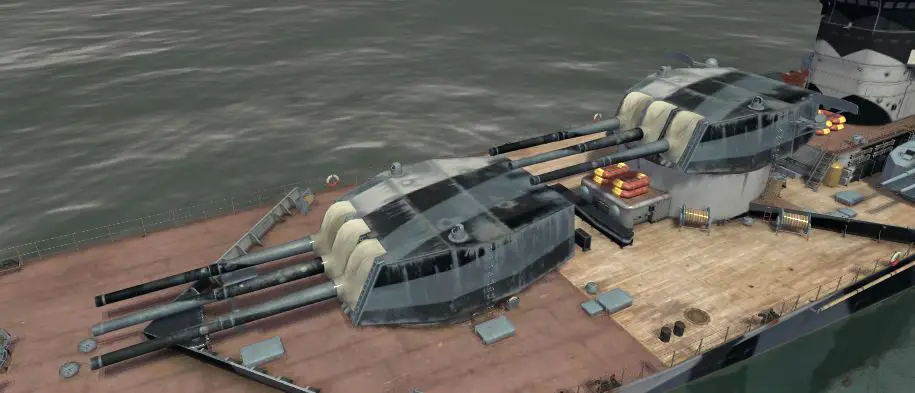
| 3 x 3 220 mm/60 B-43 | |
| Maximum Firing Range | 18.450 km |
| Reloading Time | 13 s |
| 180 Degree Turn Time | 38.3 s |
| Optimal firing angles at the front | 30° |
| Optimal firing angles at the rear | 25° |
| Sigma | 2.05 sigma |
| Maximum Dispersion | 172 m |
| Shells | |
| Type of Projectile | HE – 220 mm HE Model 1944 |
| Alpha Damage | 3 050 HP |
| Damage | 1 270 HP |
| Penetration capacity | 37 mm |
| Explosion size | 0.93 |
| Fire chance | 14 % |
| Projectile Speed | 995 m/s |
| Air Drag | 0.255 |
| Projectile Mass | 207 |
| Type of Projectile | AP – 220 mm AP Model 1944 |
| Alpha Damage | 6 350 HP |
| Chance to Cause Fire | -0.5 % |
| Projectile Speed | 995 m/s |
| Air Drag | 0.255 |
| Projectile Mass | 207 |
| Projectile Krupp | 2 950 |
| Projectile Detonator | 0.022 s |
| Detonator threshold | 37 mm |

| 6 x 2 130 mm/60 BL-109A | |
| Maximum Firing Range | 5.000 km |
| Reloading Time | 4.0 s |
| Sigma | 1.00 sigma |
| Shells | |
| Type of Projectile | HE – HE-42 |
| Alpha Damage | 1 800 HP |
| Damage | 500 HP |
| HE penetration | 22 mm |
| Explosion Size | 0.43 |
| Chance to Cause Fire | 8 % |
| Projectile Speed | 950 m/s |
| Air Drag | 0.291 |
| Projectile Mass | 33.4 |

| 6 x 2 130 mm/60 BL-109A | |
| Sector range | 0.1 km – 6.6 km |
| Hit chance | 90 % |
| Sector’s damage | 56 |
| Sector’s damage frequency | 0.29 s |
| Sector’s damage per second | 196 |
| Flak clouds number | 8 |
| Flak cloud damage | 1 820 |
| 6 x 4 57 mm ZIF-75 | |
| Sector range | 0.1 km – 4.0 km |
| Hit chance | 90 % |
| Sector’s damage | 71 |
| Sector’s damage frequency | 0.29 s |
| Sector’s damage per second | 249 |
Slot 1 | Slot 2 | Slot 3 | Slot 4 |
Damage Control Party I Work time: 5 s Cooldown: 90 s | Defensive AA Fire I Number of charges: 3 Work time: 40 s Cooldown: 120 s Continuous DPS: +50% DPS from flak clouds: +300% | Surveillance Radar I Number of charges: 2 Work time: 10 s Cooldown: 180 s Ship spotting distance: 12.0 km | Repair Party I Number of charges: 2 Work time: 28 s Cooldown: 120 s HP regeneration time: 0.5% HP/s |
Damage Control Party II Work time: 5 s Cooldown: 60 s | Defensive AA Fire II Number of charges: 4 Work time: 40 s Cooldown: 80 s Continuous DPS: +50% DPS from flak clouds: +300% | Surveillance Radar II Number of charges: 3 Work time: 10 s Cooldown: 120 s Ship spotting distance: 12.0 km | Repair Party II Number of charges: 3 Work time:80 s HP regeneration time: 0.5% HP/s |
Hydroacoustic Search I Number of charges: 2 Work time: 100 s Cooldown: 180 s Ship spotting distance: 5.0 km Torpedo spotting distance: 3.5 km | |||
Hydroacoustic Search II Number of charges: 3 Work time: 100 s Cooldown: 120 s Ship spotting distance: 5.0 km Torpedo spotting distance: 3.5 km |
The armor

The armor of the Petropavlovsk is seriously amazing. It is not without weakness, but overall it’s equal to Moskva and even superior when it comes to the citadel’s side protection.
The most important thing about this ship is the fact that she is very low on the water. Just for the sake of showcasing how low she is, here is a comparison with and without the waterline:


As you can see, a huge part of the main belt is below the water.
The bow section

The bow is 25 mm thick except for the 50 mm extended belt. Compared to the Moskva or the Stalingrad, that bow is actually inferior at tanking shots from the front because of how small is the part of the extended belt that is above water.

Another thing that makes Petropavlovsk less interesting for tanking is that the armored deck inside her bow is only 20 mm thick. This, combined with the low extended belt means that the ship is far more vulnerable to citadels through the bow than Moskva.



For the protection of the middle section, it’s also relatively thin. The upper casemate is 21 mm thick, the upper part of the citadel athwartship is 170 mm thick and the lower part, well below the waterline, is 19 mm thick.
The middle section

While the bow of the Petropavlovsk wasn’t that impressive, the middle section is without a doubt reaching Russian levels of protection. The deck and upper belt are 50 mm thick like on Moskva and Stalingrad but her citadel protection is far superior to them. Firstly, it’s a fully spaced armor. Secondly, the main belt is 180 mm thick.

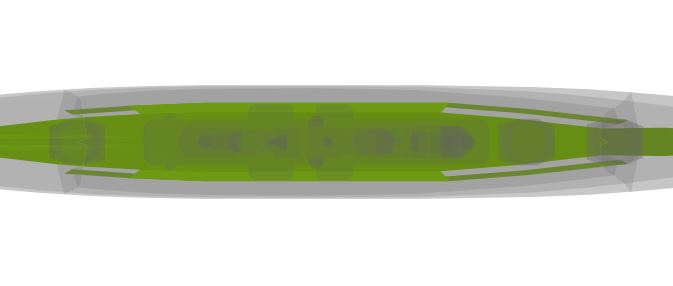
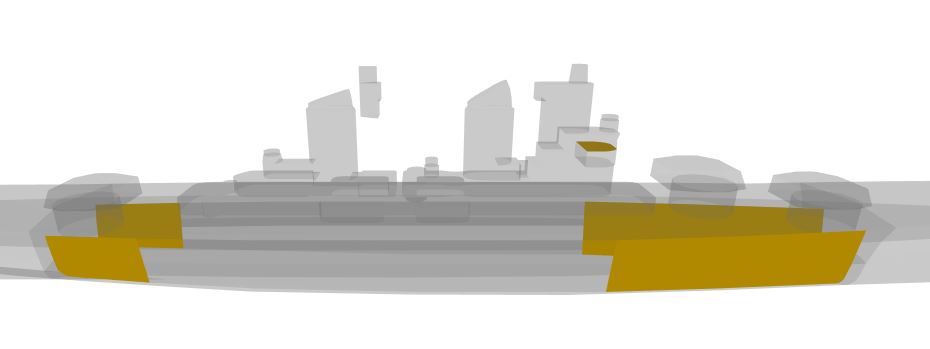
Behind this main belt, the citadel’s side protection is 40 mm thick around the engines and 120 mm thick under the turrets. This is truly a scary armor protection for a cruiser.
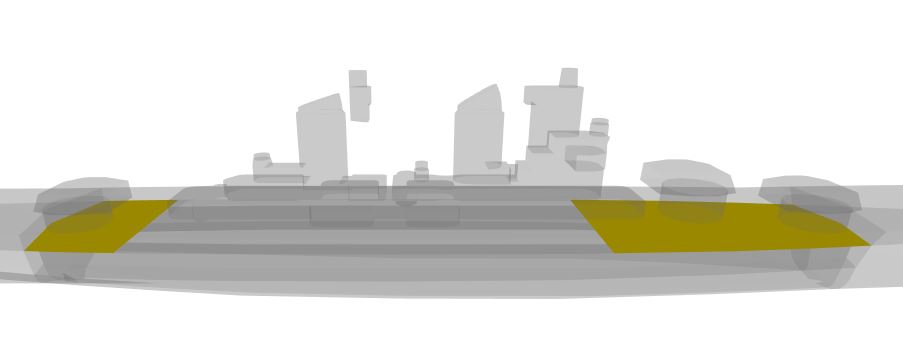
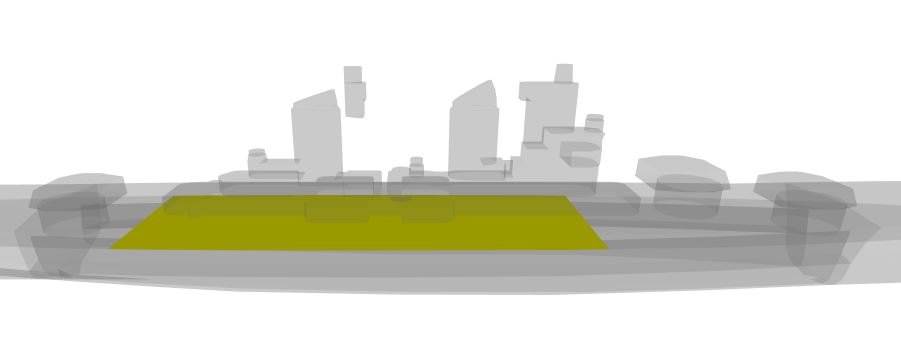
The citadel deck is 80 mm thick above the engines and 100 mm thick under the turrets. As you might imagine, it’s not enough against AP bombs. Actually, I’m not even sure why I bother saying that each time with cruisers. The only ships that have some form of protection against these bombs are battleships.
The stern section
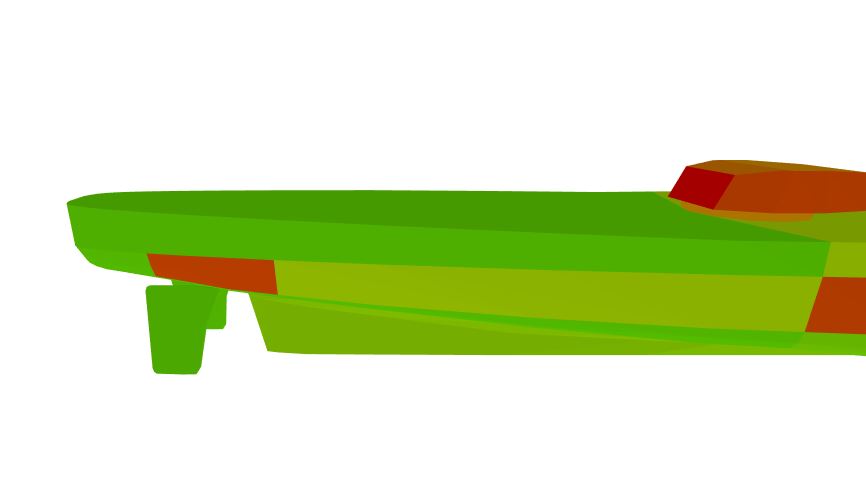
Just like the bow, the stern of the Petropavlovsk is fairly long. It’s 25 mm thick except for the 50 mm extended belt and the 180 mm armor around the steering gears.
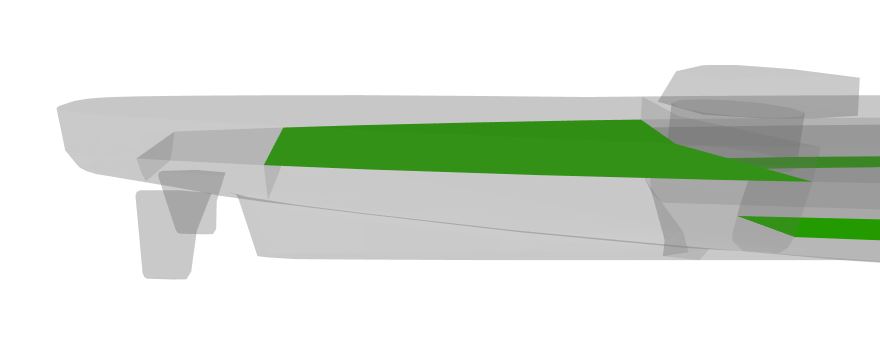
The internal armored deck is the same as at the front and also the same as Moskva with a thickness of 20 mm. This means that against battleships, it doesn’t provide any additional protection.
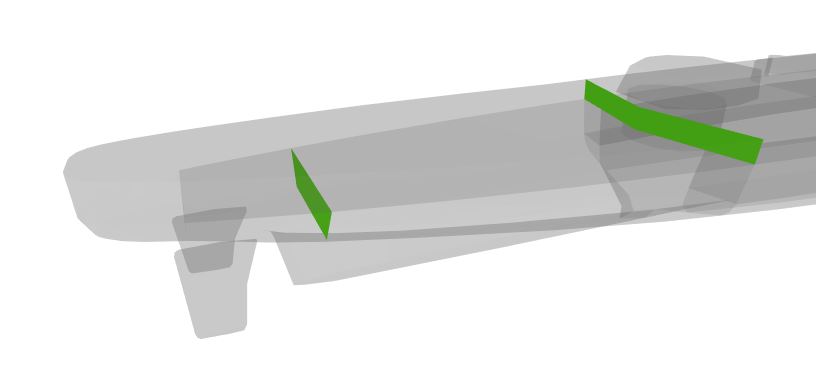
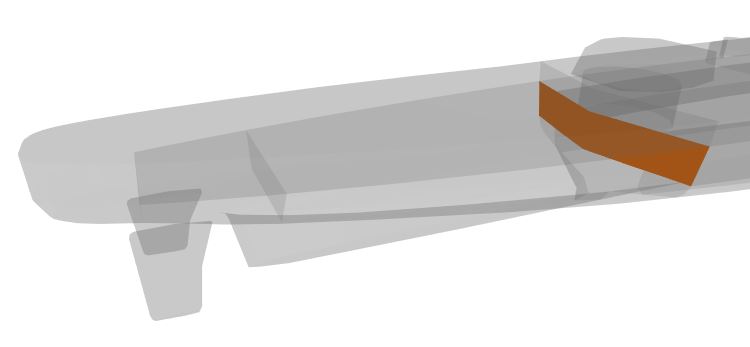
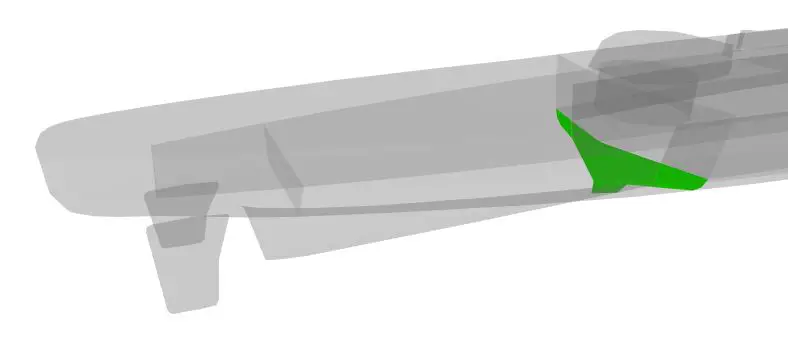
For the protection of the middle section, the casemate is 21 mm thick, the upper part of the citadel’s athwartship is 170 mm thick and the lower part, well below the waterline, is 19 mm thick.
The superstructure

Unlike the likes of Moskva, Stalingrad, Kremlin, etc. that have a large superstructure, the one of the Petropavlovsk is quite compact. It is 16 mm thick except for the conning tower with 200 mm of armor.
The turrets
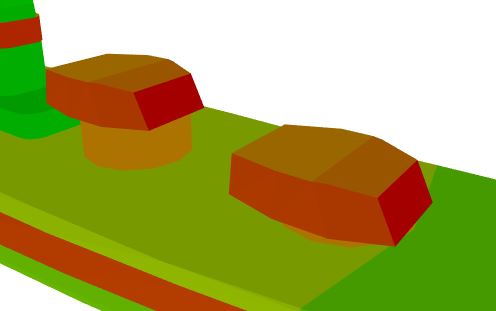
For a cruiser, these turrets are amazingly protected. The face is 300 mm thick with a 26° slope, the sides are 180 mm thick, the back is 265 mm thick and the roof is 145 and 135 mm thick.
For the barbettes, they are covered with 135 mm of armor.
Personal opinion
While this ship’s firepower is going to be amazing because of the AP, it’s actually well compensated by the reduced tankiness and mobility compared to Moskva or Stalingrad.
As for the concealment, it’s not that surprising when you see how small the ship actually is and the stealth radar part isn’t that big of a deal due to the short duration.



















